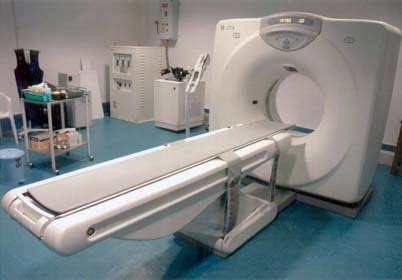CT Scan can replace angiography
 CT Scan can produce 64- slice image of blocked arteries. Though the images cannot be termed as equivalent to the tradition method of detecting blocked arteries using angiography, they are good enough to show the condition of the patient.
CT Scan can produce 64- slice image of blocked arteries. Though the images cannot be termed as equivalent to the tradition method of detecting blocked arteries using angiography, they are good enough to show the condition of the patient.
The scan method is much safer for many patients, according to researchers who published a study today in the New England Journal of Medicine.
Angiography is a complicated procedure that involves inserting a guide wire and catheter into the groin, threading them through the blood vessels to the heart. Thus the dye that allows blockages to be visible through X-ray is injected.
Angiography involves heavy bleeding, damage to blood vessels and in rare cases can also lead to death, said Dr. Julie Miller, an interventional cardiologist at Johns Hopkins University School of Medicine in Baltimore and lead author of the study.
She feels that scans may have a place in cardiovascular care.
"Our study shows they do have value, because they have a high degree of diagnostic accuracy to identify patients with tight heart blockages," said Dr. Julie M. Miller, assistant professor of medicine at Johns Hopkins University. "Having the scan is a noninvasive procedure, and that is very attractive. Patients do not undergo the risk, even though it is small, of angiography."
A study to prove the efficacy of scans was conducted on 291 people with suspected coronary artery blockages at nine U. S. medical centers. They underwent both 64-CT and conventional coronary angiography.
The results showed that CT scans accurately predicted 84 percent of the treatment procedures that were required, compared to 82 percent accuracy for angiography.